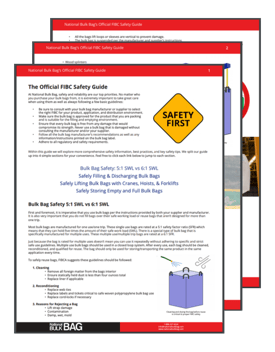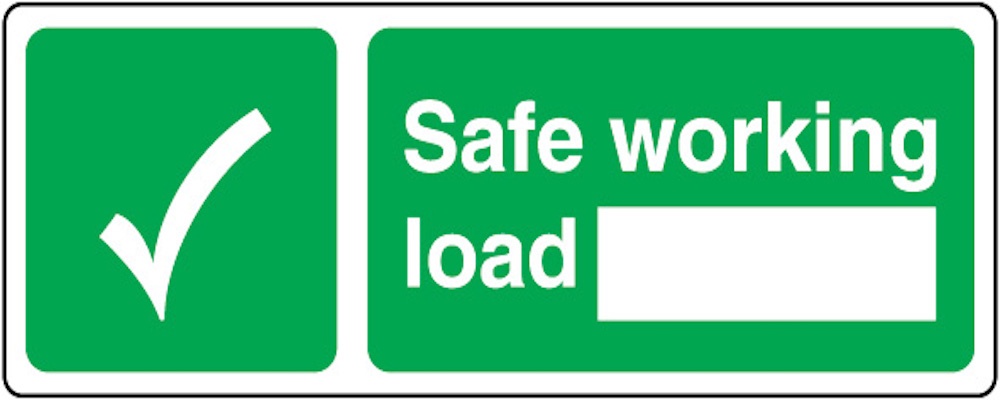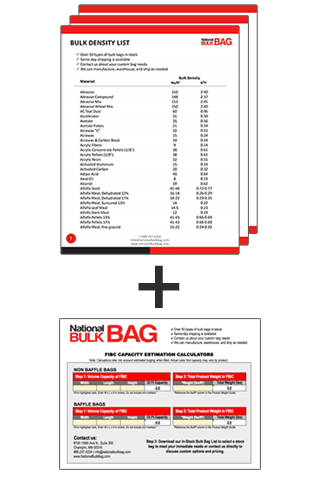FIBC (Flexible Intermediate Bulk Container) bulk bags are a fantastic solution for transporting and storing large amounts of flow-able materials. Although Flexible Intermediate Bulk Containers can carry a high volume of material, each bag has a recommended safe working load (SWL) with the most common being 2,200lbs-3,000lbs. When determining what bag is right for your application, it is important to know the weight, or bulk density, of your product/material so that you don’t exceed the SWL of the bag that you are interested in.
What’s the weight of my product/material? How do I calculate the cubic foot capacity of the bag that I am interested in? Lets determine a method for both as well as explore how to determine which bag is right for you.
Don’t forget to subscribe to our blog updates by filling out the “Subscribe to our blog updates” form to the right.
How do I determine the weight of my product?
To determine the weight of your product, download our Product Weight Guide by clicking here. You can also determine the weight of your product by simply weighing a sample and dividing its mass by its volume.
How do I calculate the volume capacity of a FIBC bulk bag?
Once you have determined the weight of your product it is time to identify what size of bag may be a good fit for your application. After you have identified a few bags that you are interested in, calculate the volume capacity of each bag by following the instructions below:
- Download our FIBC Volume Calculator by clicking here.
- Enter the desired dimensions of the baffled or non-baffled bag to determine the cubic foot capacity of the bag.
- Multiply the weight of your product by the volume to find out how much weight will be in the bag. remember: Custom bagss can hold up to 4,000 lbs.
Here is an example to assist you:
- Karla, head buyer at a food packaging plant, needs to store and transport almonds in a bag. She pulls up National Bulk Bag’s FIBC Volume Calculator and enters the dimensions of the bag she’s interested in – a 35” x 35” x 40” non-baffle bag – into the ‘Step 1: Volume Capacity of FIBC’ calculator. After entering those figures in the Calculator, she finds the bag's volume capacity is 34.1 cubic feet.
- Karla then references the National Bulk Bag (NBB) Product Weight Guide to find that almonds weigh 30 lbs/ft³ and enters that into ‘Step 2: Total Product Weight in FIBC’ calculator.
- The almond’s total weight automatically calculates to 989.6 lbs in the bag. (Volume * lbs/ft³= Total Weigh Capacity)
Here is what we've learned:
- NBB has two stock bags that will safely work for this application. One has a SWL of 2,200 lb. and other a 3,000 lb. SWL. Download our In-Stock List here.
- NBB can design a custom bag with a SWL of 1,000 lbs. which will reduce the weight of the fabric and lead to cost savings compared to the in-stock options.
If you have any questions about how to calculate bulk density of your product, how to calculate cubic foot capacity of a bag OR just have general questions about FIBCs, contact our team of experts by filling out the form by clicking here or call us at 1-888-237-4224. Our experts know that every customer and application is unique and they work with you to determine whether on of our 50+ in-stock bulk bags or a custom manufactured bag is best for your specific needs.
Thanks for reading!
 At National Bulk Bag, safety and reliability are our top priorities. No matter who you purchase your bulk bags from, it's extremely important to take great care when using them. Within this guide we explore comprehensive safety information, best practices, and key safety tips.
At National Bulk Bag, safety and reliability are our top priorities. No matter who you purchase your bulk bags from, it's extremely important to take great care when using them. Within this guide we explore comprehensive safety information, best practices, and key safety tips.
Our safety guide is split up into four sections for your convenience:
- Bulk bag safety: 5:1 SWL vs. 6:1 SWL
- Safely filling & discharging FIBCs
- Safely lifting FIBCs with cranes, hoists, & forklifts
- Safely storing empty and full FIBCs
Download our Official FIBC Bulk Bag Safety Guide by clicking the button below!






